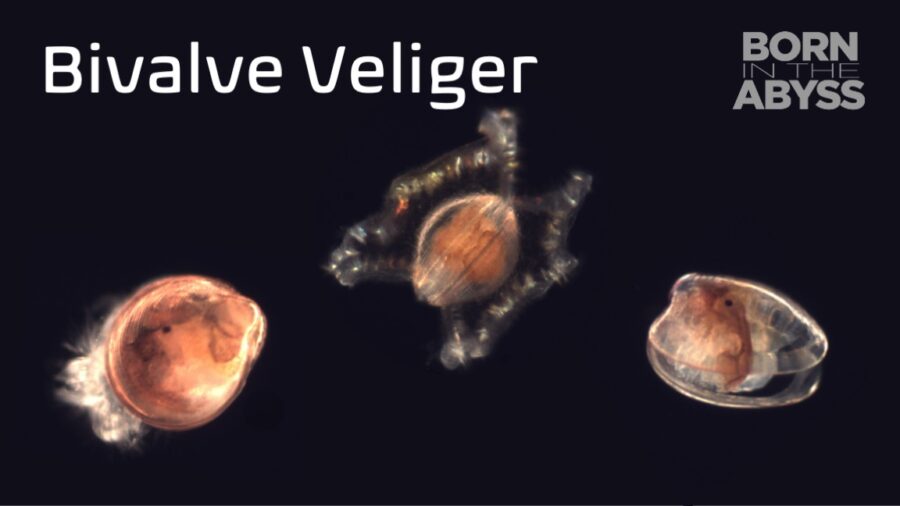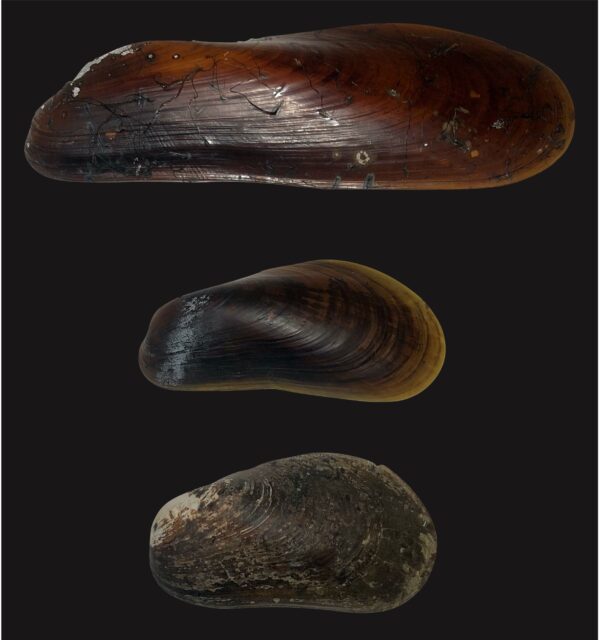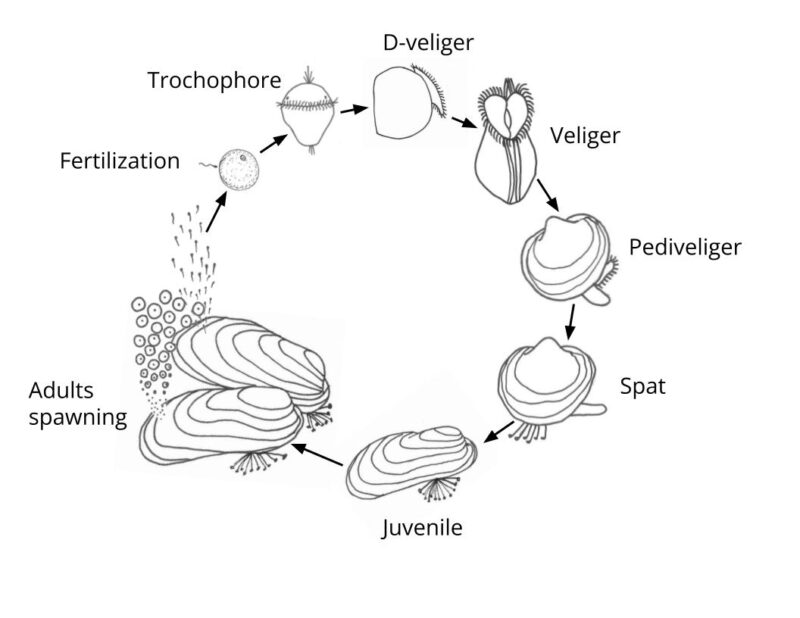
Bivalve Veliger
Plural: Bivalve Veligers
"Bivalve" is from the Latin words "bis," which means "two" and "valvae," which means "leaves of a door"
"Veliger" is from the Latin words "velum" and "-ger," which together mean "sail carrying"
Parents: Clams, mussels, and oysters
Food: Microscopic algae called phytoplankton
Size: About 500 microns tall = 0.5 millimeters = 0.02 inches

Shells of deep-sea mussels. Photo by Caitlin Plowman.
Larval Form and Function
Watch this compilation video to learn more about the movement, anatomy, and feeding of the bivalve veliger larva.
Life Cycle of a Mussel

Drawn by Nadia Stoker
- Bivalve veligers are present in all bivalved molluscs, such as clams, oysters, and mussels, and are preceded by the trochophore larva.
- Adult bivalves can be male, female, or both (hermaphrodites), depending on the species.
- Their eggs and sperm are spawned into the seawater where fertilization takes place.
- Bivalves can spend anywhere from a few hours to over a year as veligers, eating microscopic algae known as phytoplankton. Adult bivalves can live anywhere from one to hundreds of years and feed on both phytoplankton and zooplankton (microscopic animals).
- At the spat stage, mussels and some other bivalves develop byssal threads, which they use to attach themselves to hard surfaces, where they will spend their adult lives. These threads are both strong and flexible and may have applications in engineering and medicine.
Larval Quest Activity
Developed by Nadia Stoker and Caitlin Plowman as outreach and education materials accompanying the Born in the Abyss film.
The Stephen Low Company
Oregon Institute of Marine Biology, University of Oregon
National Science Foundation

